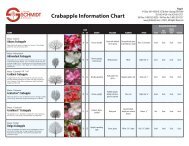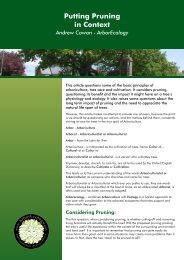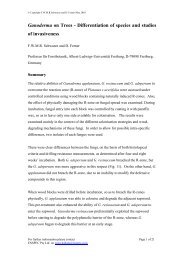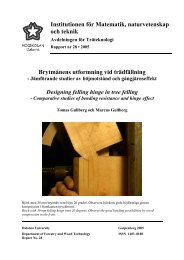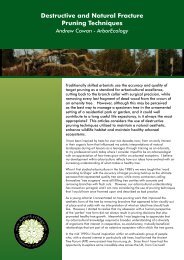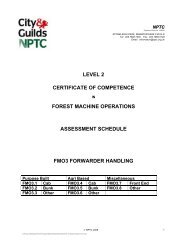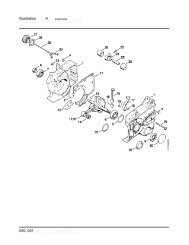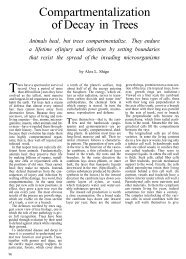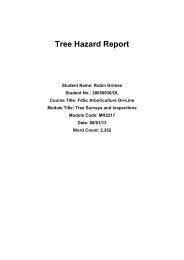working today for nature tomorrow - Justus-Liebig-Universität GieÃen
working today for nature tomorrow - Justus-Liebig-Universität GieÃen
working today for nature tomorrow - Justus-Liebig-Universität GieÃen
- No tags were found...
You also want an ePaper? Increase the reach of your titles
YUMPU automatically turns print PDFs into web optimized ePapers that Google loves.
Roost type:Pro: Bat boxes offer new or additional roosts to bats. The animals have free choice to usethem, if the boxes are appropriate. As long as nothing is known about mortality in bats thereis no concern about dead bats in boxes.Con: Bat boxes do not have the same features as natural roosts in trees. The artificialmaterial, the microclimate inside, and easy access by predators like the pine marten may beharmful to bats. The finding of frozen and other dead bats in bat boxes is alarming.Life time:Pro: Bat boxes certainly need care and in the course of annual maintenance destroyed boxesshould be replaced. This is no problem <strong>for</strong> bats as they find their traditional roost by itslocality, not by its smell.Con: The lifetime of a bat box is about 10 to 20 years while a tree with a woodpecker holecan stand <strong>for</strong> more than 100 years. When bats have taken a bat box as a traditional roost itslifetime is almost over. As was seen in Germany, regular care <strong>for</strong> bat boxes in woodlands isexceptional (Meschede & Heller 2000). Bat boxes might there<strong>for</strong>e disrupt roost sitetraditions in bats.Selectivity:Pro: Bat boxes are appropriate conservation measures <strong>for</strong> nearly all bat species (Table 6).Some species may profit in particular, but if different types of bat boxes are used in awoodland all bat species should have the chance to find an appropriate new roost.Con: In most woodlands all bat boxes are of the same type <strong>for</strong> economic reasons. In practice,a very limited number of species benefits from bat boxes (<strong>for</strong> example noctule, Nathusius’pipistrelle, brown long-eared bat). Those species that are endangered and really need helpwill either move into boxes if they have an abundant population anyway (<strong>for</strong> exampleBechstein’s bat) or they generally use bat boxes on very rare occasions (<strong>for</strong> examplebarbastelle).Competition:Pro: Additional roosts like bat boxes have very little influence on the bat species’ community.The occurrence and abundance of the species are dependent on the specific food availability.Con: New roosts that are especially utilized by certain species or individuals will have animpact on inter- and intraspecific relationships of the bats. As consequence the naturallyoccurring bat community or the system of territories of individuals and colonies may bechanged. As nothing is known about such effects (Gebhard 1997) one should follow theprecautionary principal and do without bat boxes.Monitoring:Pro: Bat boxes make the bats visible. There<strong>for</strong>e surveying of bat boxes can be included in batmonitoring schemes.56



